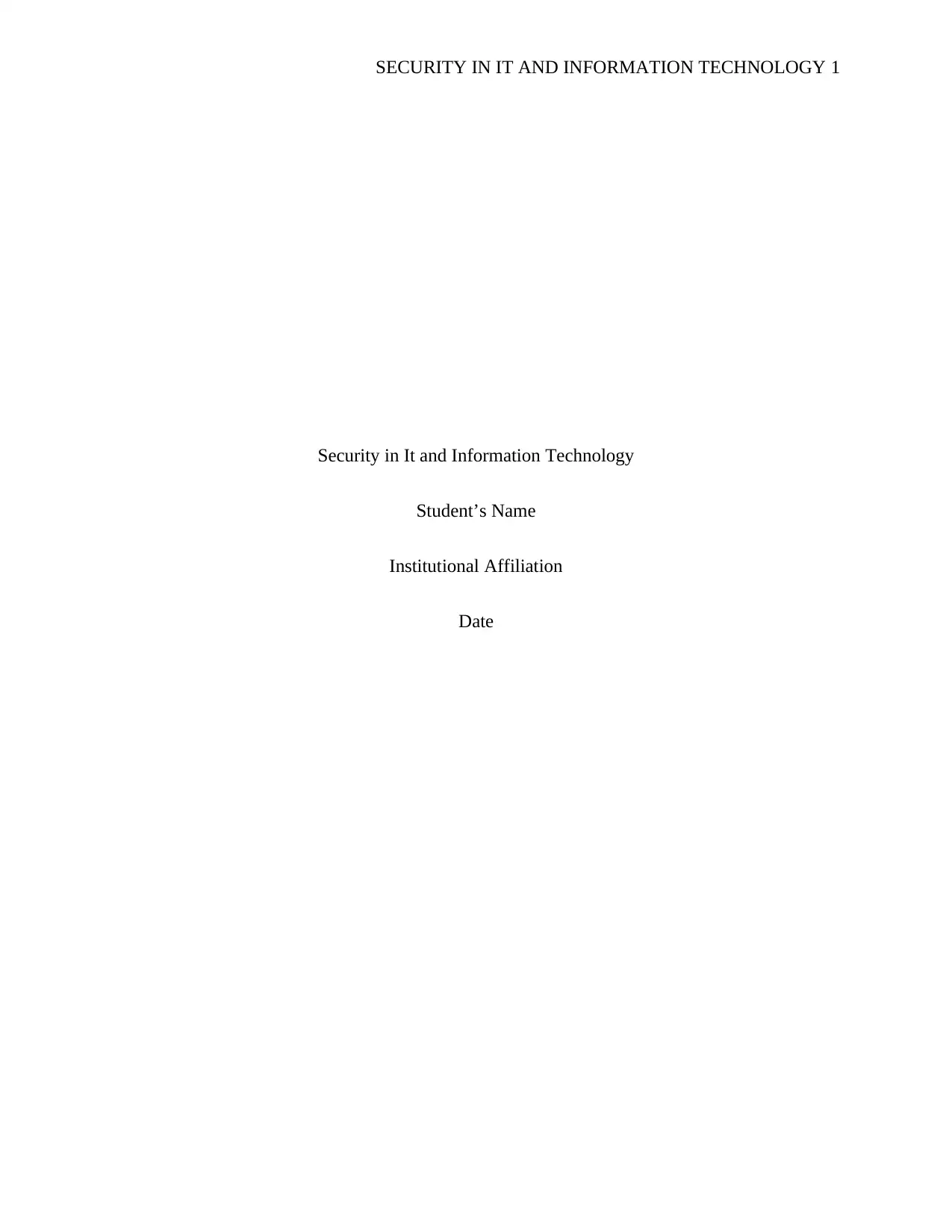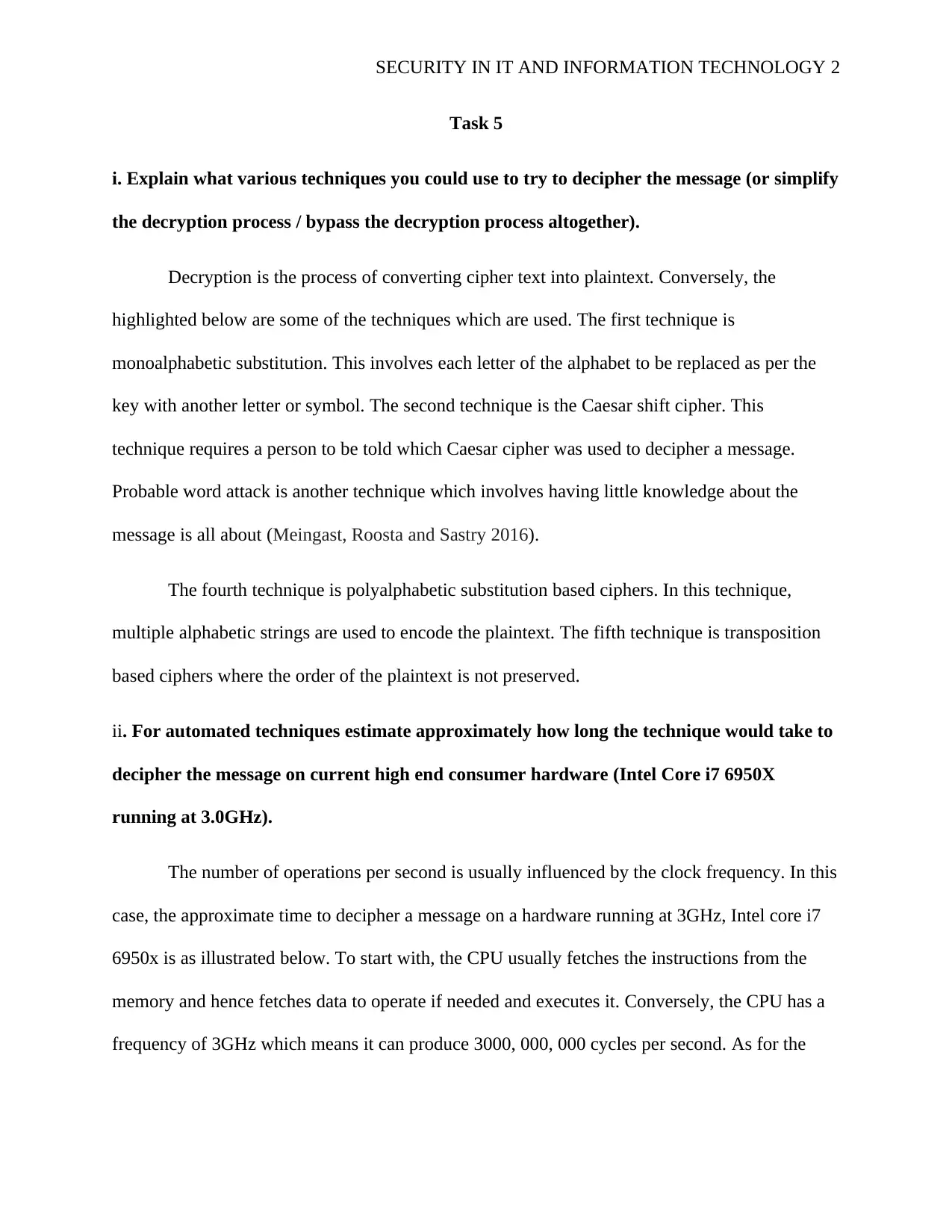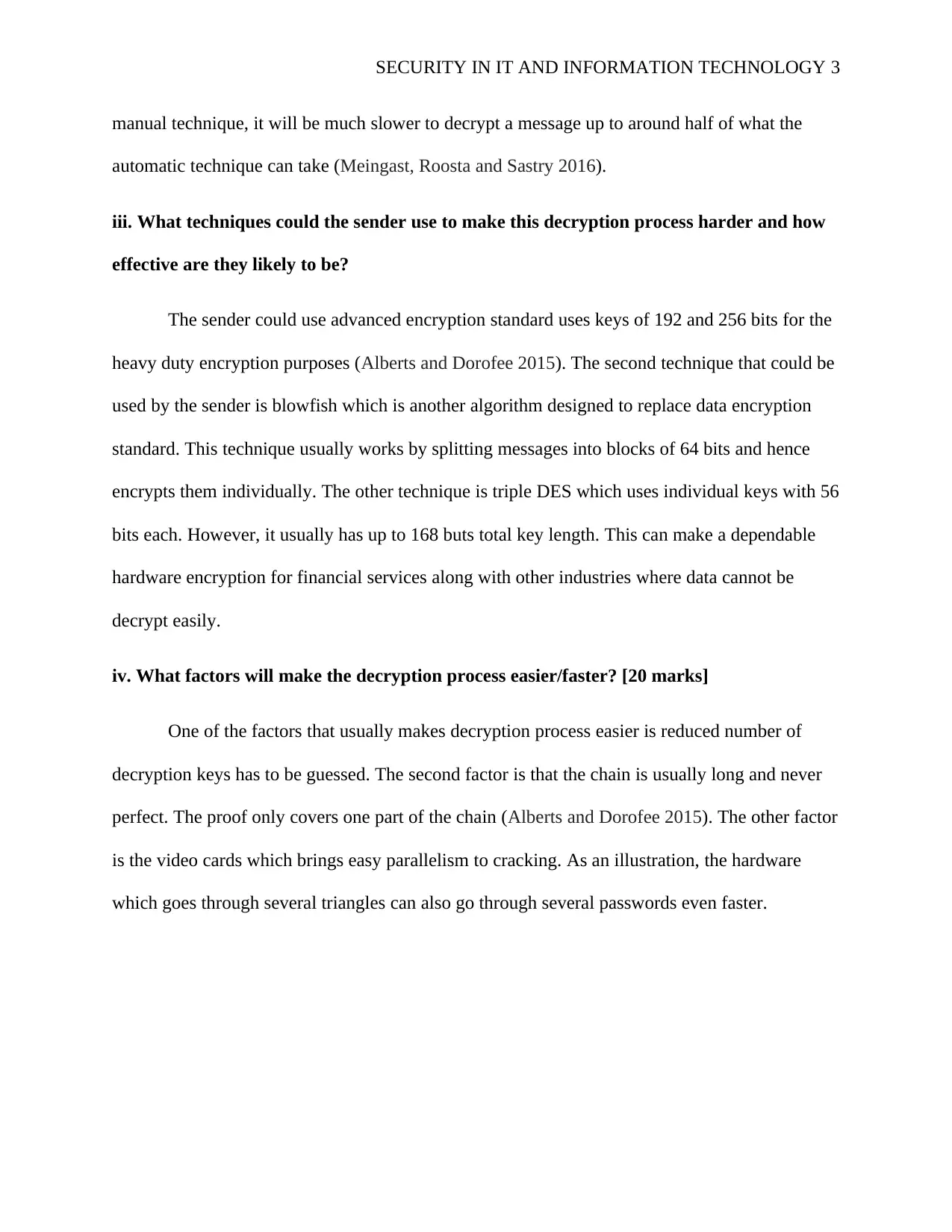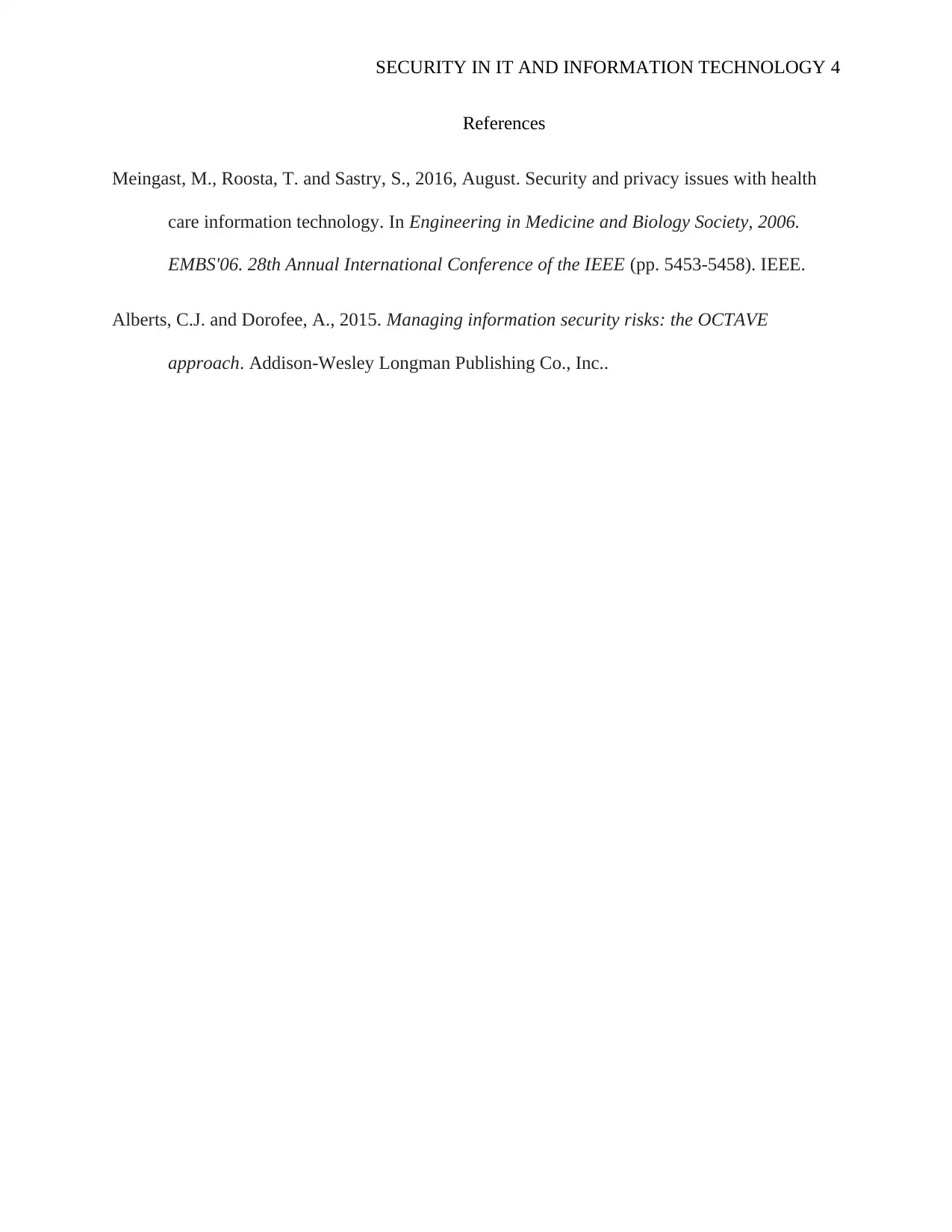COSC2651/CPT251 IT Security Assignment Report, OUA SP2 2018
VerifiedAdded on 2023/06/10
|4
|696
|304
Report
AI Summary
This report delves into the practical aspects of IT security, focusing on decryption and encryption techniques. It begins by explaining various methods to decipher messages, including monoalphabetic substitution, Caesar shift ciphers, and polyalphabetic substitution. The report then analyzes the time required to decrypt messages using automated techniques on high-end consumer hardware, considering the CPU's processing power. Furthermore, it examines the techniques senders can employ to complicate the decryption process, such as employing advanced encryption standards like AES and Blowfish, and discusses their effectiveness. Finally, the report identifies factors that can either expedite or hinder the decryption process, such as the number of decryption keys and the use of video cards for parallel processing. The assignment is a response to a specific brief and adheres to submission guidelines, highlighting a student's ability to understand and articulate key concepts in IT security.
1 out of 4








![[object Object]](/_next/static/media/star-bottom.7253800d.svg)